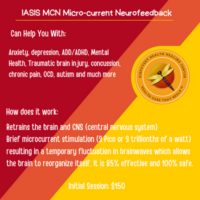Resting metabolic rate (RMR) plays a vital role in our daily energy expenditure, accounting for a significant portion of the calories burned by the body at rest. In this page, we will explore what RMR is, how it is measured, and why it is essential in understanding individual energy needs.
Resting metabolic rate refers to the number of calories the body burns while at complete rest to maintain essential physiological functions. These functions include cellular activity, breathing, circulation, and the maintenance of body temperature. Even when we are not physically active, our bodies require energy to sustain life.
Measuring RMR is crucial in understanding an individual's unique energy needs and developing appropriate nutrition and weight management strategies. Several methods are commonly used to measure RMR:
Indirect Calorimetry:
Indirect calorimetry is considered the most accurate method to measure RMR. It involves analyzing the oxygen consumption (VO2) and carbon dioxide production (VCO2) during rest to determine the amount of energy expended. This is typically done through a specialized device known as a metabolic cart or a portable metabolic analyzer. Indirect calorimetry provides precise data on an individual's energy expenditure and can be tailored to specific populations, such as athletes or individuals with certain medical conditions.
Predictive Equations:
In cases where direct measurement is not feasible, predictive equations are often used to estimate RMR. These equations consider factors such as age, sex, weight, and height to calculate an approximate RMR value. While these equations are less accurate than direct measurement, they can provide a reasonable estimate for most individuals.
RMR Measurement Devices:
Some devices, such as handheld or tabletop devices, claim to estimate RMR by using technologies like bioelectrical impedance or gas exchange analysis. These devices often require inputting additional information such as age, sex, weight, and activity level. While these devices can provide an estimation, they may not be as accurate as indirect calorimetry or predictive equations.
Understanding an individual's RMR is crucial for various reasons:
Weight Management:
RMR accounts for a significant portion of our daily energy expenditure. By knowing our RMR, we can determine the baseline number of calories needed to maintain current body weight. This information can guide dietary planning and weight management efforts, ensuring that calorie intake aligns with individual energy needs.
Customized Nutrition Plans:
Individuals with different RMR values have different energy requirements. Knowing RMR can help develop personalized nutrition plans, ensuring adequate calorie intake for optimal health and performance.
Exercise Prescription:
RMR serves as a starting point for determining overall daily calorie needs, which can then be adjusted based on physical activity levels. This information is valuable in creating exercise programs and ensuring appropriate energy balance for specific goals, such as weight loss or muscle gain.
Identifying Metabolic Disorders:
Unusually high or low RMR values may indicate underlying metabolic disorders. Abnormal RMR can be a sign of conditions such as hypothyroidism, hyperthyroidism, or metabolic syndrome. Measuring RMR can help identify these disorders and guide appropriate medical interventions.
Bio Energy Plan - Weight Loss - 90 Day Program 1 × $500.00
Bio Energy Plan - Weight Loss - 180 Day Program 1 × $900.00
Weight Loss Program 1 × $300.00
30 Day Reset (Detox) 1 × $40.00
90 Day Lifestyle Challenge 1 × $120.00
Mitofuel Protein Blend 3 × $59.99
BB Protein 5 × $61.99
YourFlora 6 × $44.99
Nettle Q 5 × $37.99
Seasonal QN 1 × $47.99
GI Shield 2 × $47.99
Restful Night 2 × $46.99
LipoGlut 2 × $45.99
K2 with D3 Liquid 3 × $36.99
LipoCalm 3 × $36.99
CV Metabolic 2 × $50.99
Iron 1 × $16.99
Mitofuel 2 × $64.99
Gel MAG 1 × $22.99
Daily Adapt 2 × $57.99
Stress Release 2 × $44.99
L-Theanine 1 × $40.99
K2 with D3 Caps 1 × $19.99
Go MAG 1 × $38.99
Pregnenolone 1 × $18.99
Immune Boost Injection 1 × $25.00
Bio-Energy Testing 1 × $275.00
Food Allergy Plan - Weight Loss 1 × $425.00
IASIS Microcurrent Neurofeedback 1 × $150.00

 Bio Energy Plan - Weight Loss - 90 Day Program
Bio Energy Plan - Weight Loss - 90 Day Program  Bio Energy Plan - Weight Loss - 180 Day Program
Bio Energy Plan - Weight Loss - 180 Day Program  Weight Loss Program
Weight Loss Program  30 Day Reset (Detox)
30 Day Reset (Detox)  90 Day Lifestyle Challenge
90 Day Lifestyle Challenge  Mitofuel Protein Blend
Mitofuel Protein Blend  BB Protein
BB Protein  YourFlora
YourFlora  Nettle Q
Nettle Q  Seasonal QN
Seasonal QN  GI Shield
GI Shield  Restful Night
Restful Night  LipoGlut
LipoGlut  K2 with D3 Liquid
K2 with D3 Liquid  LipoCalm
LipoCalm  CV Metabolic
CV Metabolic  Iron
Iron  Mitofuel
Mitofuel  Gel MAG
Gel MAG  Daily Adapt
Daily Adapt  Stress Release
Stress Release  L-Theanine
L-Theanine  K2 with D3 Caps
K2 with D3 Caps  Go MAG
Go MAG  Pregnenolone
Pregnenolone  Immune Boost Injection
Immune Boost Injection  Bio-Energy Testing
Bio-Energy Testing  Food Allergy Plan - Weight Loss
Food Allergy Plan - Weight Loss  IASIS Microcurrent Neurofeedback
IASIS Microcurrent Neurofeedback